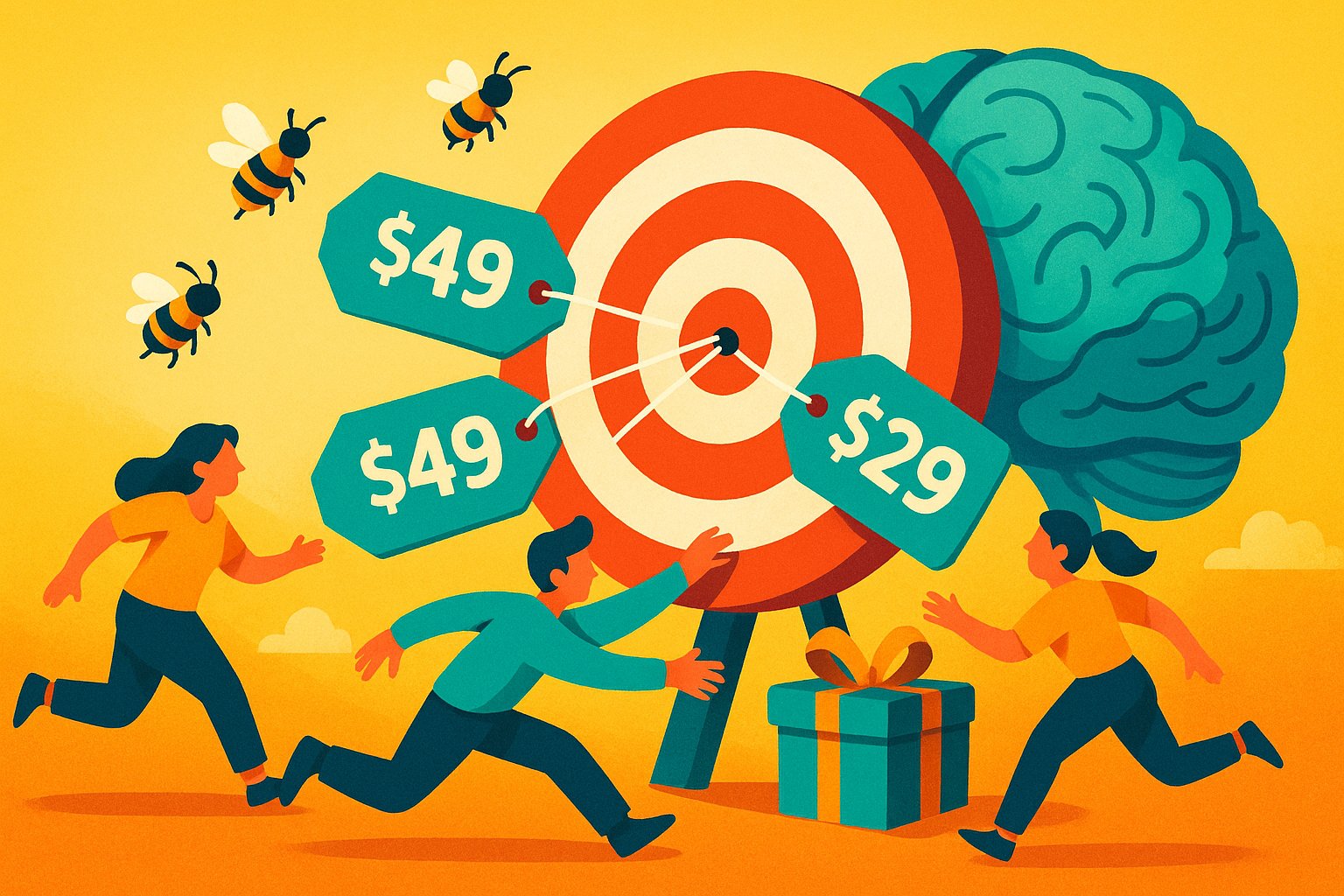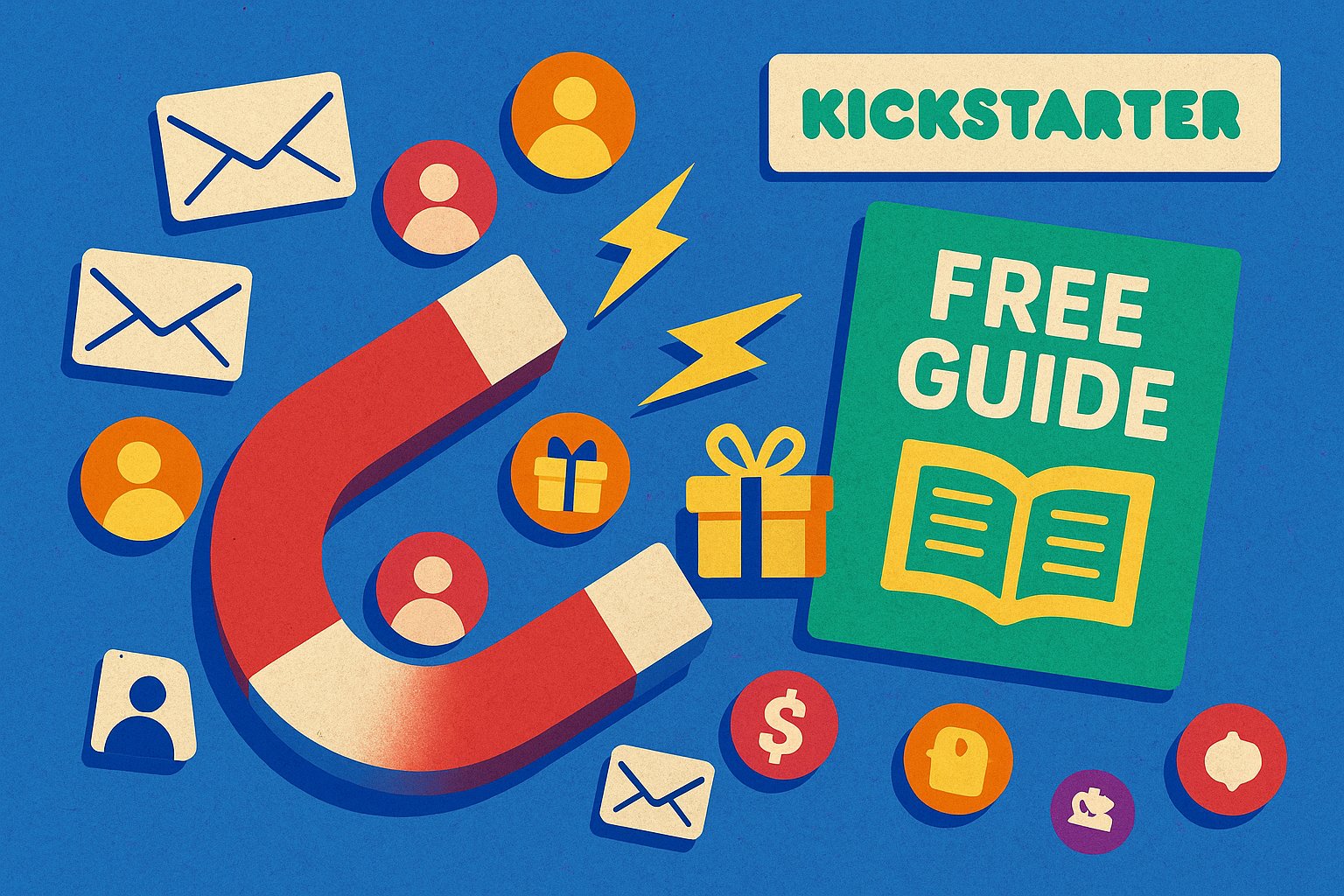Crafting the Right First Impression: The Psychology Behind Perk Pricing
When backers land on your campaign page, they make a split-second judgment: does this project feel worth a financial commitment? Perk pricing psychology taps into these instantaneous evaluations, transforming abstract numbers into compelling motivations for action. Rather than merely listing reward tiers, savvy creators weave a narrative around each price point—imbuing it with meaning, urgency, and the promise of exclusivity. This opening section unpacks why perk pricing transcends simple arithmetic. It’s a subtle dance between cost recovery, perceived value, and emotional resonance. Get the psychology right, and your backers don’t merely see a price; they see an opportunity to belong, to own something special, and to back a vision they can’t wait to champion.
Effective perk pricing begins long before actual numbers appear on the page. It starts with understanding how humans interpret value, respond to scarcity, and anchor their expectations based on presented reference points. When a creator strategically sets a “Founders Edition” at $100, the perception of value hinges on the context: is that $100 clearly a limited-run opportunity that offers extras worth far more than a standard release? Backers subconsciously compare that price to alternatives—perhaps a future retail price of $150 or a competitor’s similar product at $120—and instantly gauge whether $100 feels like a steal or a stretch. In this way, perk pricing is not just a reflection of production costs; it’s a calibrated message that aligns with backer motivations and market realities. Mastering this psychological interplay ensures that each reward tier doesn’t just sit on the page—it resonates, persuades, and ultimately converts clicks into pledges.
Perceived Value Through Strategic Anchoring
From the moment backers scrutinize your campaign, anchoring sets the tone for how they evaluate every subsequent price. Placing a high-priced “Prestige Supporter” tier at the top of your reward ladder creates a mental anchor—a reference point that makes lower-priced perks seem comparatively more affordable. Imagine your top tier offers a complete limited-edition bundle for $250. Suddenly, a $75 mid-tier option feels like a bargain by comparison, even if the actual production cost remains similar. This cognitive bias, known as the anchoring effect, leverages human tendencies to rely heavily on the first piece of information encountered.
Yet effective anchoring requires finesse. If your highest tier is priced unrealistically high without clear value justification, you risk alienating backers. The key is to anchor with a tier that is ambitious yet credible—one that includes genuine extras like a personalized thank-you video from the creator, a unique signed poster, or early access to an exclusive beta. When backers see such tangible extras, the anchor becomes not an arbitrary number but an aspirational benchmark. From there, mid-tier and entry-level perks can be framed as equally valuable stepping stones—each designed to capture distinct backer personas, from hardcore enthusiasts seeking premium collectibles to casual supporters looking for an affordable way to participate. Through strategic anchoring, you guide backers toward tiers that maximize both engagement and revenue.
Infusing Scarcity and Exclusivity to Spark Urgency
Scarcity remains one of the most potent motivators in perk pricing psychology. When backers perceive a limited supply—whether it’s a finite run of numbered editions or only 50 slots at a special price—they’re more compelled to act immediately rather than risk missing out. This fear of loss, known as the scarcity effect, transforms passivity into urgency. However, artificial scarcity quickly backfires if it feels contrived. Transparency is crucial: backers must trust that a limited-edition perk truly has restricted availability and that the extra touches—like a unique color variant or numbered engraving—genuinely elevate its value.
One effective tactic is to combine scarcity with early-bird pricing. Offer the first 100 backers a $10 discount or exclusive add-on for a brief window—perhaps 48 hours from launch. This limited-time scarcity capitalizes on both the fear of missing out and the perceived bargain. As those slots vanish, you can introduce a second wave of slightly higher-priced perks, signaling that latecomers still have a shot at exclusivity, albeit at a premium. By layering scarcity—limited quantities, timed offers, and escalating exclusivity—you sustain excitement throughout the campaign’s lifecycle, ensuring that backers feel a compelling push at each stage rather than a single fleeting moment of urgency.
Building a Tiered Pricing Framework That Resonates
Rather than a linear ladder of price points, a tiered pricing framework functions as a carefully engineered choice architecture. Backers evaluate tiers not in isolation but relative to each other, assessing incremental value at each step. A well-structured tier sequence often begins with an “Entry-Level” perk—an affordable option slightly above production cost that grants basic access to your project. From there, a mid-tier bundle might include complementary add-ons—a practical accessory or a digital companion guide—that elevate perceived value without drastically increasing production costs. The premium tier offers the full immersive experience: limited-run exclusives, direct creator interaction, or behind-the-scenes content unavailable elsewhere.
Each tier should feel like a distinct psychological category. Backers shouldn’t ponder whether spending $5 more yields $10 in value; instead, they should see clear, qualitative leaps—“At $45, you get the base product. At $75, you also get a signed art print. At $150, you unlock a personalized consultation with the creator.” This sequential framing capitalizes on the decoy effect: presenting a mid-tier that clearly outshines the entry-level option nudges backers to view the mid-tier as the “smart” choice. Meanwhile, a top-tier exclusivity option appeals to those whose primary motivation is prestige and deeper engagement. The result is an intuitive, emotionally satisfying progression that guides each backer toward the tier that aligns with their motivations—whether budget constraints, desire for extras, or hunger for status.
Harnessing Social Proof and Community Validation
Even the most robust psychological tactics falter without social proof. When backers see others enthusiastically engaging, they assume the project has merit. Displaying pledge counts, number of backers per tier, and real-time updates—such as “50 of 100 Early-Bird slots remaining”—creates a feedback loop that fuels further action. Crowdfunding platforms often highlight trending or popular reward tiers; leverage these highlights by aligning your most persuasive perks with community buzz. If a mid-tier bundle sells out faster, shout it out in your update posts: “Our Deluxe Bundle was claimed in just three hours—thank you for your overwhelming support!”
Additionally, drive conversation around perks by encouraging backers to share their choices on social media. A casual tweet or Instagram photo showcasing someone unboxing their exclusive early-bird reward generates trust through authentic user-generated content. Those organic endorsements amplify perceived value far more effectively than any static description. By weaving social proof into your perk pricing narrative—highlighting backer testimonials, posting frequent updates on sold-out tiers, and celebrating community engagement—you create an environment where backers feel part of an energized movement rather than isolated donors. This sense of belonging reinforces their commitment and entices new supporters to join the collective momentum.
Activating Emotional Triggers Through Storytelling
At the core of perk pricing psychology is emotional resonance. When backers connect deeply with the story behind your project—whether it’s the founder’s personal journey, the creative process’s challenges, or a mission-driven purpose—they’re far more likely to invest. Ground each perk in that storytelling context. A special edition perk becomes more than just an item; it becomes a symbol of shared values. Suppose you’re launching an eco-friendly gadget. Instead of merely stating “includes a bamboo case,” evoke the emotional pull: “Crafted from sustainably harvested bamboo, this limited-edition case reflects our commitment to the planet and connects you to a community that values innovation and environmental stewardship.”
Incorporate narrative elements into perk descriptions: behind-the-scenes anecdotes, glimpses of prototype testing, or quotes from early testers. When backers see the faces behind the project, their emotional engagement deepens. They become invested not just in the physical reward, but in the people and the cause it represents. This emotional anchor allows for subtle premium pricing because backers perceive an intangible—shared passion, authenticity, or community impact—that surpasses the mere sum of parts. By infusing each perk with rich storytelling, you unlock an emotional trigger strong enough to justify price points that might otherwise seem steep on purely functional grounds.
Leveraging Cognitive Biases to Boost Conversions
Several cognitive biases play a starring role in perk pricing psychology. The reciprocity principle, for instance, suggests that when creators offer unexpected value—like a surprise digital art pack or early-access beta—they trigger a psychological urge in backers to reciprocate with higher pledges. Limited-time bonuses and time-sensitive “flash perks” harness urgency and scarcity simultaneously, compelling backers to commit before feeling they’ve missed an unrepeatable opportunity.
Another powerful bias is the endowment effect: individuals value items more highly once they feel a sense of ownership. Offering a prototyping video or interactive demo to potential backers helps them mentally “own” the product before spending, making the actual purchase decision less abstract and more emotionally anchored. Additionally, framing can nudge decisions—stating that a perk tier “almost sold out” or indicating that a specific add-on “enhances the core experience dramatically” guides backer perception toward incremental value rather than absolute cost. By strategically employing these cognitive biases—reciprocity, scarcity, endowment, and framing—you create an environment where backers feel both guided and empowered to choose perks that resonate with their personal motivations.
Testing, Tweaking, and Sustaining Pricing Momentum
Even with robust psychological foundations, pricing strategies must remain flexible. A/B testing different price points, reward names, or bonus structures can reveal surprising insights. Perhaps your “Deluxe Bundle” priced at $85 underperforms, while a “Collector’s Edition” at $95 sells out rapidly, indicating that perceived prestige outweighs minor cost differences. Monitor pledge velocity, tier conversion rates, and backer feedback to identify where friction exists. If a mid-tier lingers, consider adding a low-cost bonus—like a downloadable wallpaper or an exclusive Q&A session—to reinvigorate interest without disrupting broader price architecture.
Maintaining sustained pricing momentum also involves adapting to evolving campaign dynamics. As backer sentiment shifts—perhaps triggered by a viral mention or a critical milestone—timing becomes crucial. Introduce time-limited micro-perks at strategic intervals, offering value-adds that rejuvenate engagement without requiring a permanent commitment. For example, a 24-hour “Backer Appreciation” window that includes a personalized digital badge can rekindle interest among fence-sitters. By treating pricing not as a static fixture but as a living, adaptive conversation with your community, you ensure that your perks remain relevant, compelling, and aligned with backer expectations, driving consistent conversions throughout your campaign lifecycle.
Mastering the Science and Art of Perk Pricing
Perk pricing psychology merges the analytical precision of cost calculation with the emotive power of storytelling and cognitive insight. By anchoring effectively, evoking scarcity, aligning with market standards, and activating emotional triggers, you craft reward tiers that feel both irresistible and credible. Each tier becomes a carefully choreographed invitation—an opportunity for backers to experience value, recognition, and belonging. Through rigorous testing, transparent communication, and adaptive tweaks, your pricing strategy evolves in harmony with real-time feedback, ensuring continuous momentum rather than sporadic bursts.
Ultimately, perks are not isolated commodities but extensions of your brand narrative—touchpoints where cost, quality, and community converge. When you set rewards that sell, you’re not merely maximizing revenue; you’re cultivating a culture of support, fostering advocates who carry your vision forward. Embrace the nuanced psychology underpinning perk pricing, and watch as your campaign transcends transactional exchanges, transforming every pledge into an enduring testament of shared passion and purpose.




